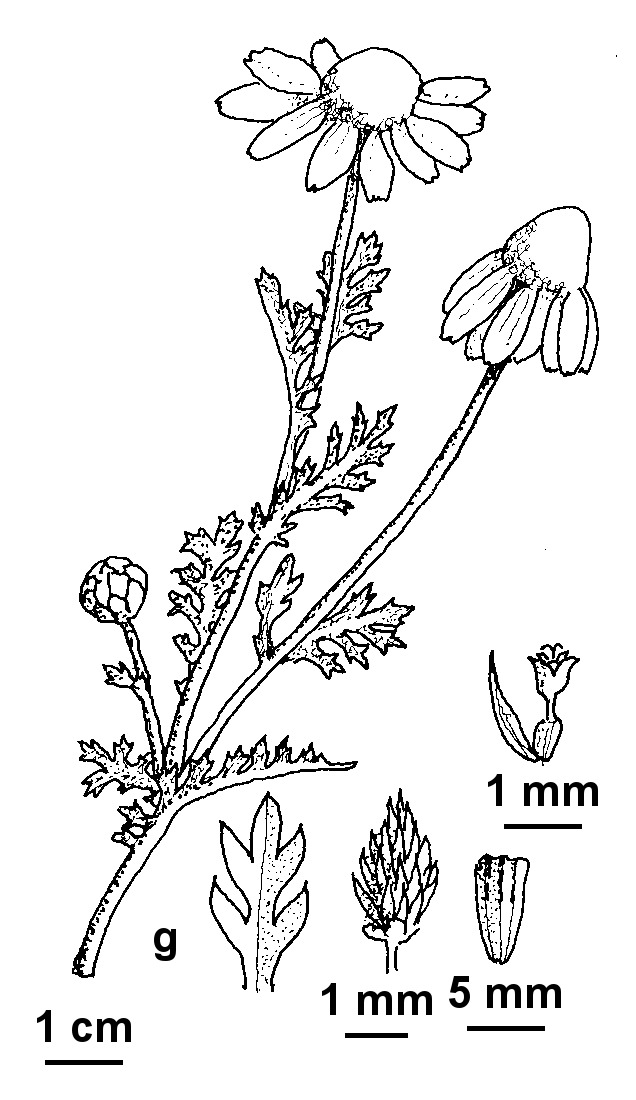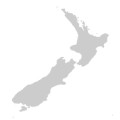Anthemis arvensis
L. Field ChamomileAscending or decumbent annual or biennial to 60 cm high, branched from base; stems striate, pubescent. Leaves sessile, obovate in outline, 2–5 cm long, 1–2 cm wide, 1–3 times pinnatisect, dull green, hirsute at least on lower surface, ultimate segments narrow-linear. Capitula 2–3 cm diam., solitary or in loose leafy corymbs; peduncles 2–10 cm long; involucral bracts elliptic, 4–5 mm long, pubescent; receptacle-scales lanceolate, acuminate, evenly distributed, as long as or longer than disc florets. Ray florets 15–20, female, ligules 8–12 mm long, white; disc florets numerous, c. 3 mm long, yellow. Cypselas 1.5–2.5 mm long, 4-angled, 10-ribbed, smooth; pappus a minute irregular rim. Flowers Dec.–Jan.
VVP, VRiv, DunT, HSF. Also naturalised SA, NSW, Tas. Native to Europe. An ornamental herb that has been collected in south-western Victoria (exact locality unknown) and the Dandenong Range, probably as a garden-escape.
Jeanes, J.A. (1999). Asteraceae. In: Walsh, N.G.; Entwisle, T.J., Flora of Victoria Vol. 4, Cornaceae to Asteraceae, pp. 652–666. Inkata Press, Melbourne.
 Spinning
Spinning



